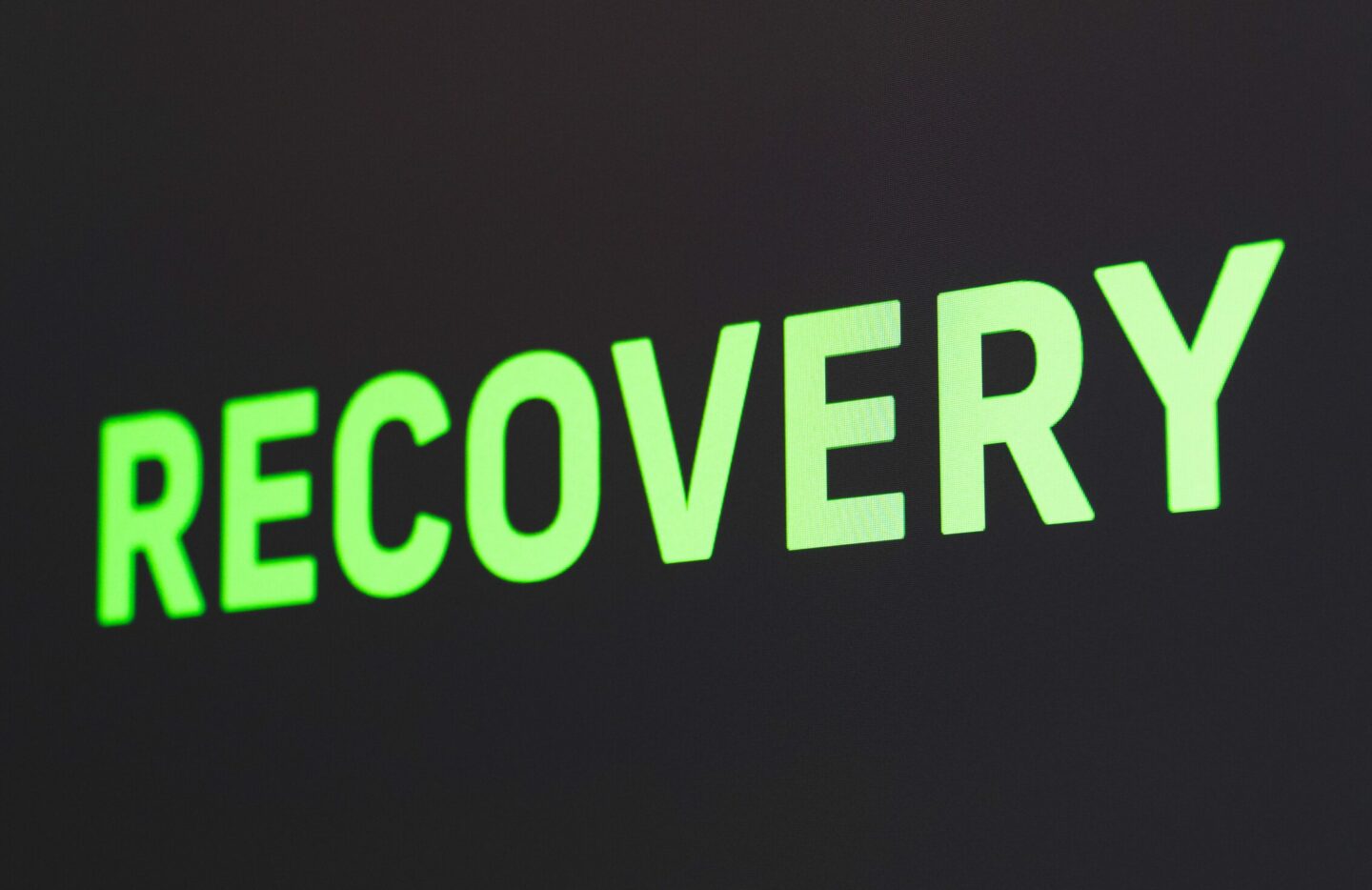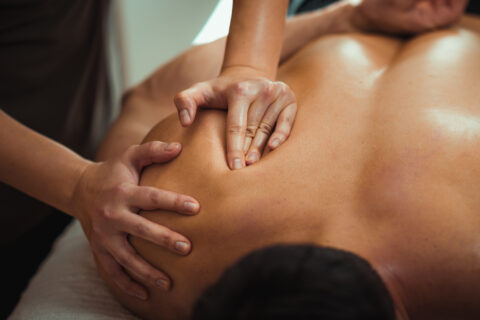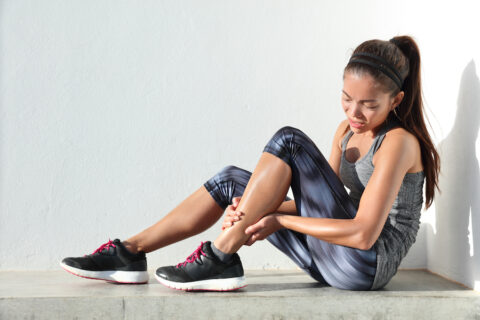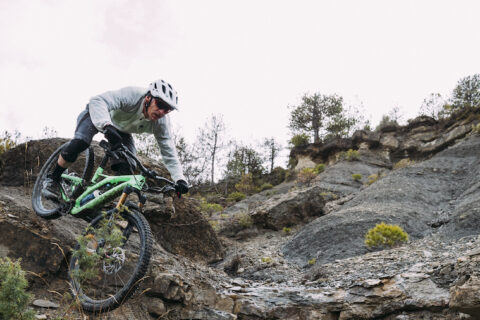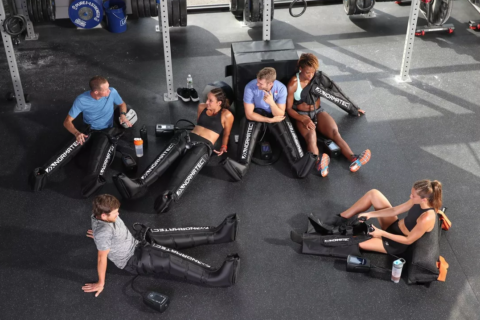The fundamental principle of exercise physiology states that we produce stress—or damage—in training. If that damage is sufficient, our bodies super-compensate and build back stronger, assuming we give it the time and resources it needs for the process of recovery to take place.
What, exactly, is recovery? And what’s responsible for all that repair? The same system that helps us fight off, or recover from, illness.
There is perhaps no other system in the human body that is as complex as the immune system.
In endurance sports, we like to talk about the complexity of energy systems, but scientists have known for decades every step in the process of glycolysis or the Krebs cycle—down to the number of joules of energy a single molecule of fat or carbohydrate will produce. By contrast, top immunologists are still trying to identify all of the cell types involved in our immune system, not to mention a full understanding of how this beautifully intricate system works.
Like many of the remarkably complex system in our bodies, the immune system serves several roles. It does far more than just fight off the periodic viral invader. It acts as a transport system, manages natural cell apoptosis, and even “tests” our food before allowing it to enter our bodies.
The immune system also serves another critical function: repair. Every time you cut your finger, break a bone, or damage your muscles in competition or training, the immune system snaps into action to get you back to normal. You probably don’t realize how active it is as you go about your day without a thought.
Repair makes us stronger
As mentioned, the training process causes damage to the body. When athletes do enough damage, the body is rebuilt stronger than it was, through the recovery process. This is adaptation.
To use an analogy, think of your body as a house, the training process as a big storm, and your immune system as a team of repairmen. Training, like a storm, does damage to the house. You are, in fact, weaker after training—not stronger.
It’s after the storm when the repairmen do their work. And our immune systems act in similar ways to homeowners. If the storm just rips a few roof panels off, we’ll simply replace the panels. If the storm rips the roof off, we’ll build a new, and stronger, roof.
That is the art of training. Too little damage and we just replace the roof panels and don’t improve. Too much damage and the house falls down. It’s all about doing the right amount of damage.
In both these scenarios, one thing remains constant: The repairmen (i.e. the immune system) waits until after the storm to repair the damage. And that’s why we must recover and give time for those repairs to take place.
The inflammatory repair process
The immune process involved in muscle repair has three stages:
- The true inflammatory stage. Macrophages enter the damaged tissue, increase inflammation and remove damaged tissue. [1,2] In the literature, this stage is often referred to as “secondary damage.” [3]
- Resolution of inflammation. The macrophages switch to an anti-inflammatory state so that they can start the repair work. [1,2]
- Remodeling. The immune system continues to break down and rebuild the cytoskeleton of the muscles. This phase can take 96 hours or longer. [4]
That is a remarkable simplification of a very complex process, but it’s enough of an explanation to understand three very important concepts about recovery and adaptation.
First, it is inflammatory. The damage you do to your muscles during a hard workout is repaired by the same macrophages, T-Cells, and cytokines that fight viruses. And, to a degree, they have a universal playbook—inflammation. Inflammation serves an important purpose: It draws blood, nutrients, and other immune cells to the area needing attention to help fight the virus or repair the damage. It’s an effective response—it just doesn’t feel very good. [1,5,6]
There can be issues with this inflammation. To keep that inflammation localized, our bodies will blunt inflammation elsewhere in our bodies, which makes us susceptible to illness. [7] Worse, if the inflammation is excessive, it can spill into our bodies, overwhelming that blunting effect and causing a form of endotoxemia. [7,8] This is why in one study of endurance athletes with respiratory tract infections, a pathogen could only be identified in 30 percent of them. [9]
Second, the three-step repair process takes a relatively consistent length of time, and there is little to nothing any athlete can do to speed up that process. [1,2,4,5]
Finally, hard exercise causes a release of natural pain killers which keeps us functional but blunts the repair process. This makes sense because it’s hard to keep functioning at our best when our muscles are inflamed. To truly repair and adapt, the painkillers have to clear out of our muscles—and that takes rest.
The best recovery? Get out of the way
Over the course of millions of years, evolution has created an immunological repair system that no piece of technology can come close to rivaling. This process allows our bodies to function for every second of every day for 80 years, give or take.
So, it’s a little unrealistic to think we can improve on our bodies’ repair process with a supplement or fancy device.
Not surprisingly, research demonstrates that the best thing athletes can do is give their bodies the nutrients they need, put their legs up, and get out of the way. [3,10]
That said, there are caveats. Sometimes the macrophages involved in that first inflammatory stage can get a little over-excited and cause too much inflammation. Reducing that acute excessive inflammation can be beneficial. Just remember that it tends to occur with bad injuries and not normal training-induced damage. On the flip side, there are some recovery tools that can “enhance” or aid the third remodeling phase.
So, with the immunology of repair and adaptation in mind, let’s look at the various recovery techniques.
Sleep and nutrition
Good sleep and proper nutrition comprise 80 percent of what athletes should focus on for optimal recovery. During sleep, the pain killers can clear and the repairmen can go to work. That is when the bulk of the repair work happens. The more sleep you get, the better the repair. [11,12]
How do you know it’s working? If you go to bed feeling good and wake up barely able to get out of bed, you’re on the right course—as strange as that sounds. It’s working because the painkillers have cleared and inflammation is in full swing.
Likewise, your body needs nutrients (think: raw building materials.) It’s harder for damaged muscles to rebuild glycogen, so increasing carbohydrates can help. Likewise, there is evidence for increased protein needs, particularly BCAA. Keep in mind that, except immediately after exercise, natural sources are always better. [3]
Compression
Compression is anything that puts pressure on the muscles. That includes massage, massage sticks, foam rolling, compression socks, and pneumatic leg devices. [13–17] Remember that the purpose of inflammation is to draw blood to the area of damage. Compression aids blood flow which may reduce the body’s need to rely on inflammation. There’s also evidence that compression, particularly massage, can promote an immune profile more in line with the third stage of repair when remodeling occurs. [18,19]
This actually makes some intuitive sense. Our bodies have a way of telling us what they need when they’re damaged. Injure your ankle and pain tells you not to put weight on it. Likewise, when our muscles are sore, our natural inclination is to rub them.
Ice and NSAIDs
Both icing and NSAIDs reduce inflammation. The problem is that inflammation is an essential part of the repair process. There is significant evidence that both can delay repair, reduce adaptations, and even cause permanent muscle scarring. [3,10]
Heat treatment, on the other hand, is equivocal. It doesn’t appear to cause damage but it doesn’t help recovery either. [10]
Stretching
While there are reasons to stretch, as an aid to recovery there is little evidence that it helps. [3]
Recovery rides
Short easy rides or walks increase blood flow and aid the immune system. [8]
Magic bullets?
Products with dramatic claims are just that: dramatic. Remember that the repair process follows a set pattern on a set timeline. There is very little athletes can do to enhance it, but there’s plenty we can do to interfere. Products that make dramatic claims about improving the process are generally a lot of drama and not much substance.
How much recovery is enough?
When I look for ways in which pros train differently than amateur riders, I routinely find that their ability to train hard isn’t any different. Amateurs can go out for a HIT workout and tear themselves apart as effectively as any pro.
What often separates the two groups is their willingness to recover. Pros will train hard but they will also recover “hard.” Amateurs are often scared or unwilling to take the same sort of rest. I’ve lost count of the number of times I’ve given an amateur rider a hard training block and then asked them to take a recovery week only to get an expression of shear terror. “I’ll lose my fitness, all that hard work will go away! Could I just take two days of rest and still hit the Wednesday training race?”
If I can convince them to take that full rest, they are almost always surprised by how strong they feel at the end of it.
This is why I tell my athletes, “Be as intense in your recovery as you are in your training.”
Effective recovery isn’t a device or trick or supplement. The most effective recovery is enough recovery. And here’s a hint: It’s almost always more rest than you think it is.
References
- Chazaud B. Inflammation during skeletal muscle regeneration and tissue remodeling: application to exercise‐induced muscle damage management. Immunol Cell Biol 2016;94:140–5. https://doi.org/10.1038/icb.2015.97.
- Peake JM, Neubauer O, Gatta PAD, Nosaka K. Muscle damage and inflammation during recovery from exercise. J Appl Physiol 2017;122:559–70. https://doi.org/10.1152/japplphysiol.00971.2016.
- Howatson G, Someren KA van. The Prevention and Treatment of Exercise-Induced Muscle Damage. Sports Med 2008;38:483–503. https://doi.org/10.2165/00007256-200838060-00004.
- Neubauer O, Sabapathy S, Ashton KJ, Desbrow B, Peake JM, Lazarus R, et al. Time course-dependent changes in the transcriptome of human skeletal muscle during recovery from endurance exercise: from inflammation to adaptive remodeling. J Appl Physiol 2014;116:274–87. https://doi.org/10.1152/japplphysiol.00909.2013.
- Tidball JG. Inflammatory processes in muscle injury and repair. Am J Physiology-Regulatory Integr Comp Physiology 2005;288:R345–53. https://doi.org/10.1152/ajpregu.00454.2004.
- Suzuki K, Nakaji S, Yamada M, Totsuka M, Sato K, Sugawara K. Systemic inflammatory response to exhaustive exercise. Cytokine kinetics. Exerc Immunol Rev 2002;8:6–48.
- Fehrenbach E, Schneider ME. Trauma-Induced Systemic Inflammatory Response versus Exercise-Induced Immunomodulatory Effects. Sports Med 2006;36:373–84. https://doi.org/10.2165/00007256-200636050-00001.
- Gleeson M, Bishop N, Oliveira M, Tauler P. Influence of training load on upper respiratory tract infection incidence and antigen‐stimulated cytokine production. Scand J Med Sci Spor 2013;23:451–7. https://doi.org/10.1111/j.1600-0838.2011.01422.x.
- SPENCE L, BROWN WJ, PYNE DB, NISSEN MD, SLOOTS TP, MCCORMACK JG, et al. Incidence, Etiology, and Symptomatology of Upper Respiratory Illness in Elite Athletes. Medicine Sci Sports Exerc 2007;39:577–86. https://doi.org/10.1249/mss.0b013e31802e851a.
- Peterson AR, Smoot MK, Erickson JL, Mathiasen RE, Kregel KC, Hall M. Basic recovery aids: what’s the evidence? Curr Sport Med Rep 2015;14:227–34. https://doi.org/10.1249/jsr.0000000000000159.
- Knufinke M, Nieuwenhuys A, Geurts SAE, Møst EIS, Maase K, Moen MH, et al. Train hard, sleep well? Perceived training load, sleep quantity and sleep stage distribution in elite level athletes. J Sci Med Sport 2018;21:427–32. https://doi.org/10.1016/j.jsams.2017.07.003.
- McMurray RG, Brown CF. The effect of sleep loss on high intensity exercise and recovery. Aviat Space Environ Medicine 1984;55:1031–5.
- Kephart WC, Mobley CB, Fox CD, Pascoe DD, Sefton JM, Wilson TJ, et al. A single bout of whole-leg, peristaltic pulse external pneumatic compression upregulates PGC-1α mRNA and endothelial nitric oxide sythase protein in human skeletal muscle tissue: Compression increases PGC-1α gene expression in human muscle biopsies. Exp Physiol 2015;100:852–64. https://doi.org/10.1113/ep085160.
- Tiidus PM. Alternative treatments for muscle injury: massage, cryotherapy, and hyperbaric oxygen. Curr Rev Musculoskelet Medicine 2015;8:162–7. https://doi.org/10.1007/s12178-015-9261-3.
- Haun CT, Roberts MD, Romero MA, Osburn SC, Mobley CB, Anderson RG, et al. Does external pneumatic compression treatment between bouts of overreaching resistance training sessions exert differential effects on molecular signaling and performance-related variables compared to passive recovery? An exploratory study. Plos One 2017;12:e0180429. https://doi.org/10.1371/journal.pone.0180429.
- MacDonald GZ, Button DC, Drinkwater EJ, Behm DG. Foam Rolling as a Recovery Tool after an Intense Bout of Physical Activity. Medicine Sci Sports Exerc 2014;46:131–42. https://doi.org/10.1249/mss.0b013e3182a123db.
- Kraemer WJ, Bush JA, Wickham RB, Denegar CR, Gómez AL, Gotshalk LA, et al. Influence of Compression Therapy on Symptoms Following Soft Tissue Injury from Maximal Eccentric Exercise. J Orthop Sport Phys 2001;31:282–90. https://doi.org/10.2519/jospt.2001.31.6.282.
- Best TM, Hunter R, Wilcox A, Haq F. Effectiveness of Sports Massage for Recovery of Skeletal Muscle From Strenuous Exercise. Clin J Sport Med 2008;18:446–60. https://doi.org/10.1097/jsm.0b013e31818837a1.
- Tejero-Fernández V, Membrilla-Mesa M, Galiano-Castillo N, Arroyo-Morales M. Immunological effects of massage after exercise: A systematic review. Phys Ther Sport 2015;16:187–92. https://doi.org/10.1016/j.ptsp.2014.07.001.

